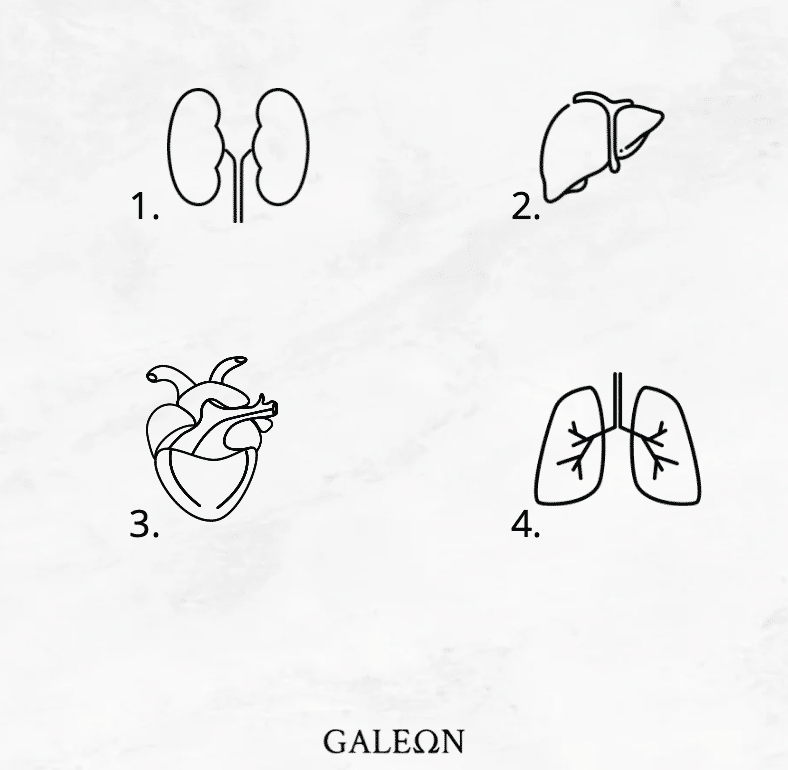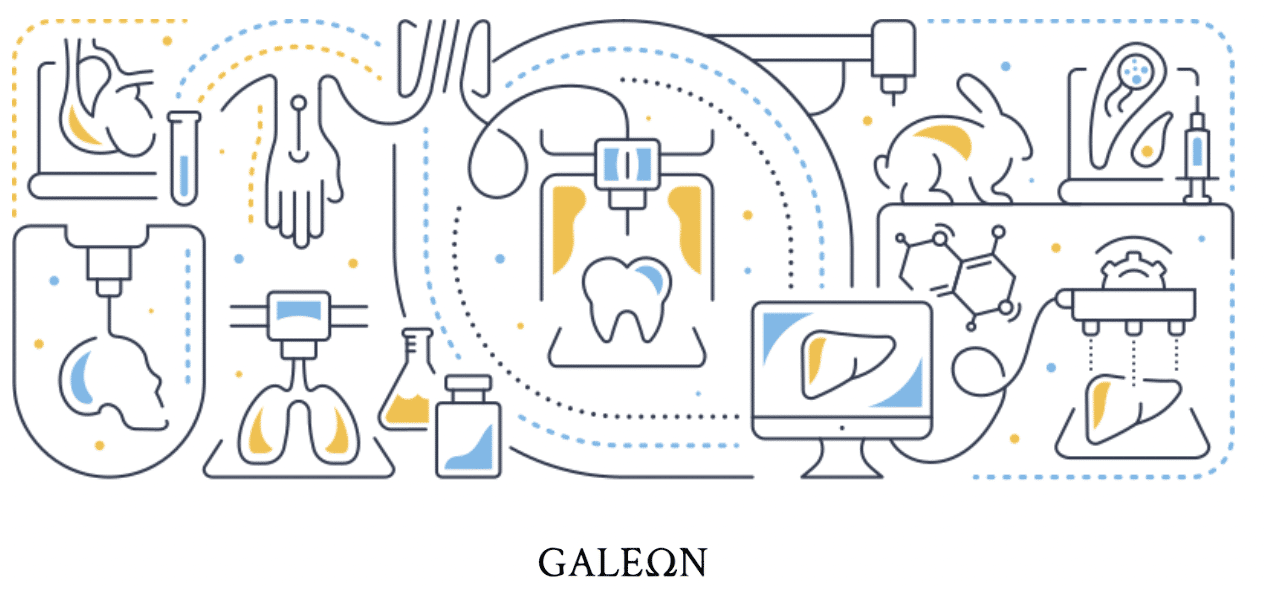Artificial organs and 3D bioprint
Organs printed from a new technology called 3D bioprint: utopia or reality?
Thanks to advanced research in regenerative medicine, it may be possible to print artificial organs.

When you put it like that, you might think you're in a science fiction movie.
However, this is the whole principle of 3D bioprinting.
In concrete terms, this technology uses regenerative medicine techniques, using stem cells to create artificial organs.
If the trials prove to be conclusive, this could change many things concerning organ donation and the problems encountered today.
In France, despite the presumed consent established in the name of national solidarity, the number of people on waiting lists for organ donation is greater than the number of donors.
This is why regenerative medicine is interested in printing organs using 3D bioprint technology.
So let's take a closer look at how this works and whether it is possible to create artificial organs. What stage of development are we at and what are the chances of success?

Some facts about organ donation
Before talking about artificial organs, some facts about organ donation.
Because it is important to provide some context, here are some facts.
As we said in the introduction, there are hundreds of thousands of people waiting for an organ transplant.
In France, in 2021, there were about 24,000 according to the association France Transplant.
However, only 5,273 were able to receive a transplant that same year.
Although this is not enough, it is still 19.3% more than the previous year.
The number of donors has increased, but patients are still waiting. Sometimes even months or even years to be a recipient.
Note that the kidney is the most transplanted organ, followed by the liver, the heart, the lungs, the pancreas and finally certain parts of the intestines.
What if the challenge now and in the future is not to rely only on increasing the number of donors?
It is now necessary to develop other techniques to be able to save more people.
And this technique, researchers may have found it with the creation of artificial organs via the 3D Bioprint technology.

3D bioprint, regenerative medicine and artificial organs
What are we really talking about when we think of 3d bioprint?
Regenerative medicine is a branch of medicine that combines cell therapy and 3D printing.
Let's go back to the basic protocol in order to understand how we could end up printing organs tomorrow.
Printed organs?
Let's answer THAT question that may intrigue you: Is it possible to print organs directly from a printer?
No, at least not for the moment.
Simply because cell therapy is limited for the moment to the duplication of cellular tissues and stem cells.
How is bio printing inspired by 3D printing?
3D printing works like this: a superposition of layers of different materials to obtain, in fine, a 3D object.
By materials, we mean metal, plastic, etc.
Following the same concept, the bioprint uses on the other hand, a specific ink containing among others, stem cells, hydrogel molecules and finally, some kind of nutrients helping the development of the cells.
As far as price is concerned, as you can imagine, if 3D printers were already inaccessible to the average person, there is little chance that you will be able to have one in your living room.
Focus on the origin of the "ink" used in 3D bioprint
Where does this ink come from? How is it produced?
As we said earlier, this ink contains stem cells and other more specific cells.
The latter are obtained by extraction which can take two forms.
- The first is to take cells and then duplicate them in a secure environment.
- The second is to extract cells directly from the skin.
Once we have the sample, how do we obtain the material?
By duplication.
Buy your first crypto easily with Galeon
How to duplicate these cells?
In the same way as a 3D printer, the bioprint will use its two elements:
- A compression jet,
- A base or an ink.
The technique used will be extrusion (in this case, micro-extrusion*).
*Extrusion (or micro-extrusion in our case) is a mechanical process which consists in the compression of materials in a specific format. This process can be found in fields such as food processing (e.g. pasta), plastics processing and metallurgy.
Bio printing works like this: a fine needle injects ink onto a flat surface or into a liquid medium, creating a continuous filament of extreme thinness. This filament is composed of a mixture of compressed cells.
The advantage with BioPrint, unlike regenerative medicine, is that the duplication is done much faster.
Currently, researchers are only at the experimental stage.
The duplication of cells is not the simplest process, it is very easy to damage the tissues which are very fragile.
Moreover, if some of them can stabilize themselves, others require a particular treatment (UV rays, addition of products ... etc).
We are therefore at this stage of testing: either the mixture takes and the creation of cellular tissue is conclusive, or it is a failure.
Some conclusive examples?
For the moment, it is possible to print quite "simple" elements such as ligaments, cartilages or skin.
Facial regeneration tests on rats have been tested with rather satisfactory results. The same goes for bio-printed bladders.
This is a start, but what about complex organs? Would it be possible one day to obtain the same result for organs like a kidney, a heart...etc?

The complexity of 3D bioprinting to recreate artificial organs
Indeed, several problems appear.
First, the fact that the cells are extremely fragile and can be easily damaged after the micro-extrusion step.
Then, it is necessary to be able to feed these cells in a human-sized organ. With all the necessary nutrients and oxygen. So far, experiments have only led to the recreation of organs of minimal size.
Finally, it would be necessary to develop also red blood cells in order to integrate them into the bio-printed tissues.
Conclusion, printing an artificial organ similar to that of a living being, yes, but similar only for the moment.
Some tracks are currently being followed to combine both cellular tissues and electronic elements.
Conclusion
With all this information, multiple questions arise.
The first one being of course, how far are we able to go? Will we ever reach the state of a superman if we combine both natural and electronic elements?
But with a bit of hindsight, the most important question, and probably the most complex one, is to ask ourselves who will be able to benefit from this technology?
Because once again, we suspect that access will be limited to "privileged" geographical areas, having the necessary means and conditions.
In any case, bioprinting and, moreover, regenerative medicine could be a solution in the future.
Nevertheless, it requires more scientific research, which also implies more funding. This is why it is important to support research and, above all, to be interested in it for future generations.
Finally, and this will be the last axis, ethical questions will inevitably arise. Countries and communities will necessarily have to clarify the regulations, especially in terms of medical practices.
Would you like to be informed of Galeon's progress in advance?
Subscribe to our newsletter!
